On average, organizations only have 28% of apps they use integrated with their CRM software.
This means that most of the time, employees switch between apps to complete tasks. Hence, they spend more time getting things done. Is there a solution? Yes — CRM integrations.
Integrating your sales stack with other software tools across your platform enables organizations to get the most out of their CRM technology investments, automates manual tasks, aggregates your data, and makes individual employees’ jobs easier.
Let’s discuss what these are, why you need them, and what are the best CRM integration apps.
What Is CRM Integration?
A CRM integration is the process of connecting your organization’s applications with your CRM system. These can be apps for any purpose, like accounting, attribution, lead gen, sales, social media, or any other type of tool.Integrations allow for easy data access, sync, and exchange since it’s all in a single place, your CRM system.
You can manage your data effortlessly, and you get a full picture of your organization’s state and the processes running in it. With your apps integrated, you can manage the entire customer lifecycle in your CRM.
Benefits of CRM Integration
Automation is a significant opportunity CRM integrations bring to all business areas.
By integrating your apps into a CRM system, you can aggregate data and set up automated CRM workflows to complete tasks with minimal employee involvement.
Here are the benefits you get with CRM app integrations:
- Better data.
- Reduced chances of error.
- Efficient resource allocation.
- Increased CRM adoption.
- Increased productivity.
- Improved customer care.
- Overall automation.
Types of CRM Integrations
There many types of apps and services you can connect with your CRM system. Let’s discuss them based on their purpose.
1. Sales & prospecting integrations
Connecting your sales and prospecting tools to a CRM system allows finding more prospects over time and turning them into leads faster. For example, such integrations help you gather information on the prospecting clients and interactions with them in one place. You can also track the sales pipeline progress, generate reports and share them with the team.
2. Marketing integrations
The customer information you collect can be easily assigned to your contacts for you to get a 360-degree customer view. Connecting your marketing channels to the CRM also allows for automating your marketing campaigns. The leads will then move through the sales process faster, and you’ll close more deals.
3. ERP integrations
Enterprise resource planning (ERP) unites accounting, finances, human resources, and other data. Connecting ERP tools to the CRM allows for immediate data access for accountants, sales representatives, supply chain managers, and employees in other departments. They can then provide an enhanced purchasing experience to customers and make better decisions internally.
4. Customer service & support integrations
Cross-referencing information between the customer support team and other teams is extremely helpful in providing great customer service. For example, developers/product teams can access data from support team logs when their assistance is needed. Customer support specialists can log tickets that automatically pull into an organization’s CRM, allowing any future sales or customer success team members to see a customer had a support-related issue.
5. Training, adoption, and enablement integrations
CRMs are powerful platforms, but to achieve the full benefit and ROI of these tools, your sales team must understand how to use them effectively. Consider your contextual processes and tasks in your CRM, such as entering custom call notes, creating opportunities, updating prospect fields, moving deals to a new status, etc.
If your sellers cannot complete these tasks, find relevant data, or enter incorrect data, your CRM becomes full of dirty data and becomes not useful for sellers.
These integrations enable sellers with the right learning, enablement, and support content, at the moment of need.
6. E-commerce integrations
Sales in e-commerce businesses benefit from CRM integrations the most. You can set up and track customer journeys to move leads through the funnel automatically. Information on the completed deals and orders also syncs with contacts immediately, giving you a clear and accurate overview of each customer, payment, and other information.

18 Must-Have CRM Integrations to Enable Your Sellers
Here are the seventeen most powerful integrations that every organization should connect with their CRM in 2022:
1. Email integration
An email is an essential tool for any marketing and sales strategy — it’s a powerful communication channel, and it is a great tool for your internal communication in an organization. So whether it’s for communication with your prospects, customers, or teammates, you use email every day.
To prevent you from switching between the applications or tabs, integrating your email client of choice in the CRM will simplify then communication.
With Outlook or Gmail integration, you can create email templates and access customer data from the CRM to personalize your campaigns. It is still important to protect your domain against possible threats, with the help of an SPF record checker or any other tool.
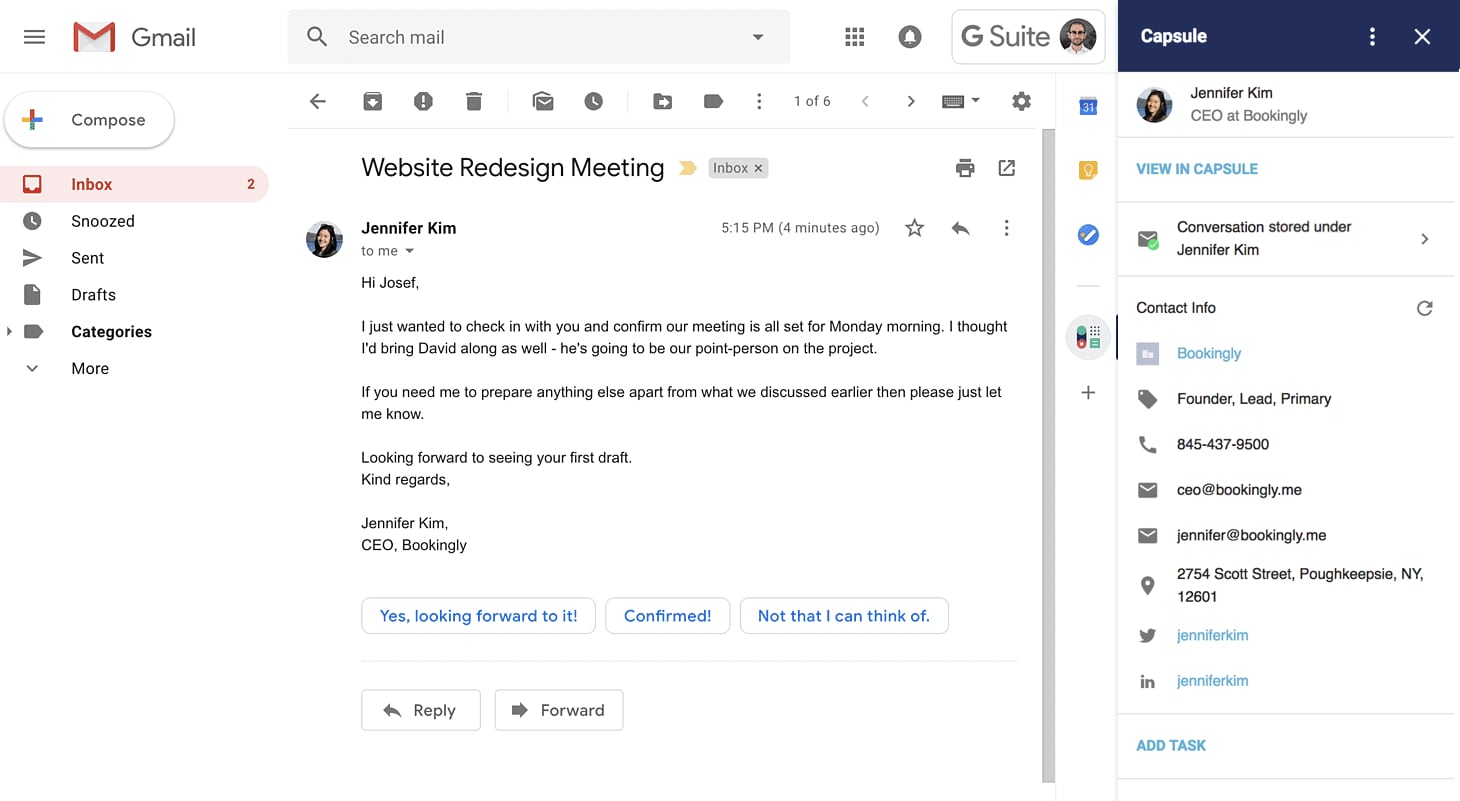
Alternatively, you can integrate your CRM with autoresponders, so customers and prospects will receive automatic emails from you, e.g., notifications about meetings, successful action completion, and so on.
2. Digital adoption platform (DAP)
A digital adoption platform (DAP) enables sales teams to create contextual in-app guidance, notifications, and self-help support for individual sellers to use their CRM in their contextual workflows better.
With a DAP like Whatfix, sales leaders can create:
- Product tours and task lists to onboard new sellers fast.
- A self-help wiki that connects to your sales documentation and processes and overlays on your CRM, helping to provide an on-demand, self-help support channel.
- Tooltips and beacons to alert sellers of process changes or essential areas in the CRM.
- Field validations to improve your CRM data quality.
A DAP also enables sells leaders with a no-code analytics tool to track CRM adoption, highlight and fix friction areas in the platform, and identify new support documentation that needs to be created.

3. Calendar tools
Syncing your calendar with the CRM gives you an opportunity to organize your time according to your availability and tasks without leaving the CRM.
Depending on your CRM system, you can integrate third-party (like Outlook or Gmail calendars) or native (like HubSpot Meeting Scheduling App) calendar applications.
Let’s say you’ve received an email from a client requesting a meeting. With an integrated calendar, you can easily check your availability and book an event right in the app in just several clicks. The system will also send out an invitation to the client and a meeting notice.
4. Slack and other internal communication tools
Internal communication is key for high effectiveness and productivity in any organization. Well-established communication channels contribute to proper team coordination and timely updates, hence it’s crucial to make interactions easy and accessible. And integrating Slack, Microsoft Teams, or other applications for chatting and file exchange do the job.
Connecting your messengers to the CRM makes it simpler for any team member to see incoming messages and reach out to colleagues without switching between the apps.
The integration also helps store files directly in the CRM for easy access for all team members. You can also set up message updates from other apps.
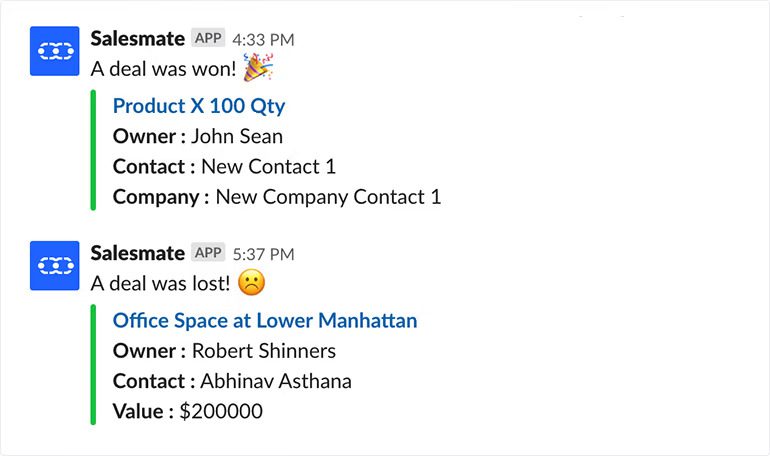
5. Video conferencing tools
Video calling is another area where integrations are beneficial in terms of ensuring effective communication. If you have a video conferencing tool like Zoom tied to your CRM system, you can host webinars, easily organize meetings and join calls with teammates, customers, and prospecting leads.
Call arrangements can also be triggered by messages via email or messenger apps. Besides, you can pull up information about the customer directly from the CRM as you join the call. This way, you can take a personalized approach to every customer and prospect, therefore enhancing the quality of your communication.
6. Marketing automation tools
When you have marketing integrations, you automate lots of related processes. You can target customers across various channels at the same time, including email, social media, website, and other areas, all from a single application.
With tools like ActiveCampaign, Marketo, and HubSpot Marketing Hub, you can plan your marketing strategies and implement them in collaboration with your teammates. You can also track the progress of all campaigns and each individual customer or audience to analyze and improve your strategy.
For some, marketing automation and CRM integration will be native (think Salesforce CRM and Salesforce Marketing Cloud, previously known as Pardot). These integrations use data to paint a full picture of the sales journey, with attribution from where the deal came from, the last time the lead visited your website, what pieces of sales collateral have been read, and more.
7. Prospecting channels integrations
Integrating your prospecting software into the CRM really takes it to the next level. Some of the tools you can use as integrations are LinkedIn Sales Navigator and Spotio — you’ll get a prospecting system inside of your CRM.
Having your prospecting channels connected to other integrations and lead data helps increase the quality of your sales efforts. You get access to prospect data and sales documentation to approach leads in an engaging and personalized way. You can also qualify leads directly in the CRM to sync their status for the entire team.
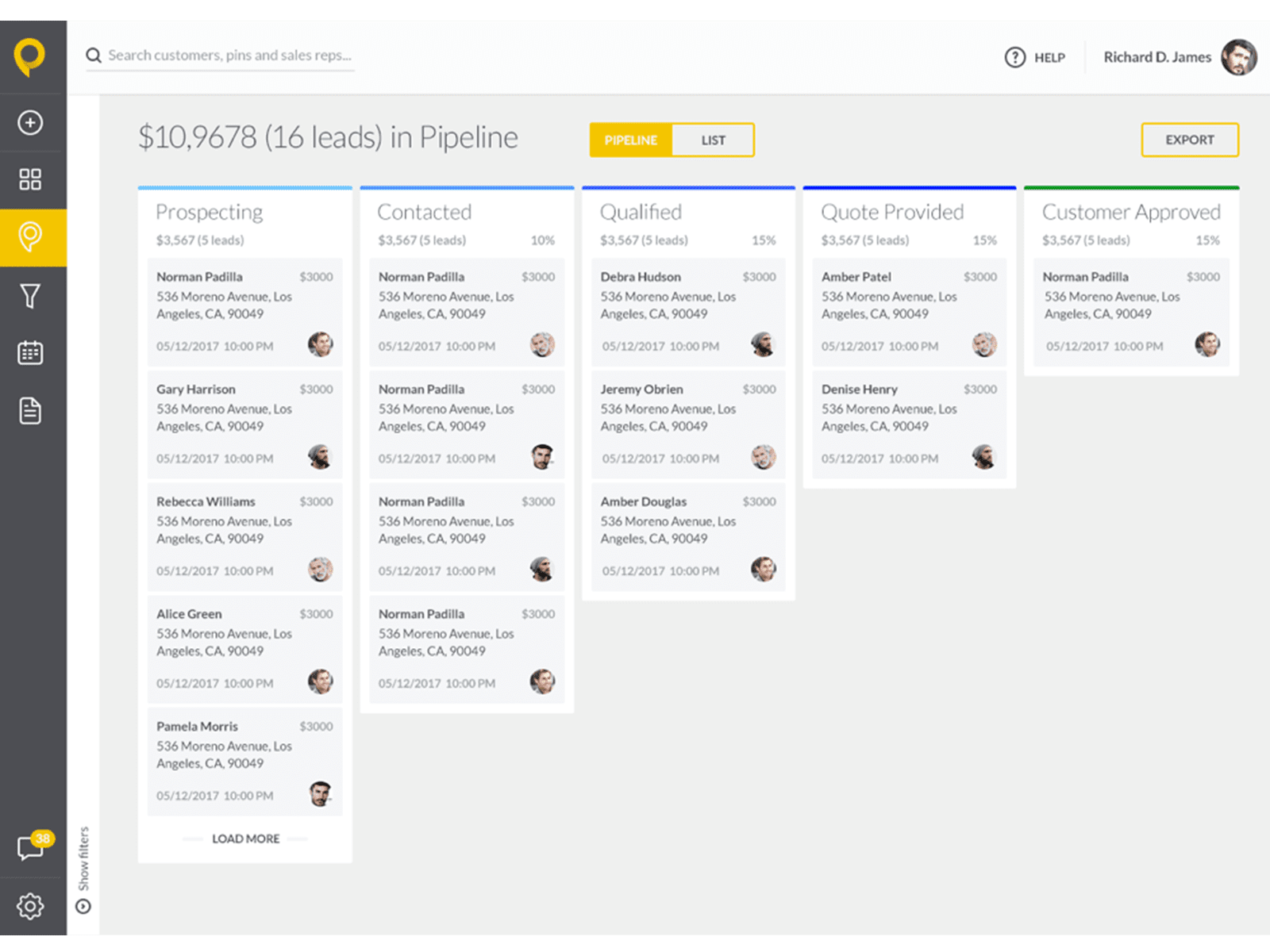
8. Lead forms and similar data integrations
Instead of creating and filling in customer surveys and lead forms manually, tools like Typeform or Survey Monkey help automate the process. The software gives you access to many templates and ready-to-send forms to save your time. You can also customize the forms to meet the needs of your organization.
Integrating the applications in the CRM, in turn, allows for creating a streamlined workflow for logging the data into the system. The information syncs with your contact list — you get the data added to each lead right when the form is filled in. Later on, you can easily access the information for various marketing purposes.
9. Google Analytics and other web data tracking tools
Constant data tracking is an essential aspect of successful marketing. When you know how well your campaigns are doing, you can make effective decisions toward more sales.
Metrics like customer engagement, email open rate, website traffic, and many others define the success of your marketing strategy.
Bringing your tracking tools to the same environment where you do your marketing is just convenient.
By integrating tools like Segment or Google Analytics in your CRM, you can access metrics in the same window, generate and view reports directly in the system, and share the analytics with your team in just a few clicks.
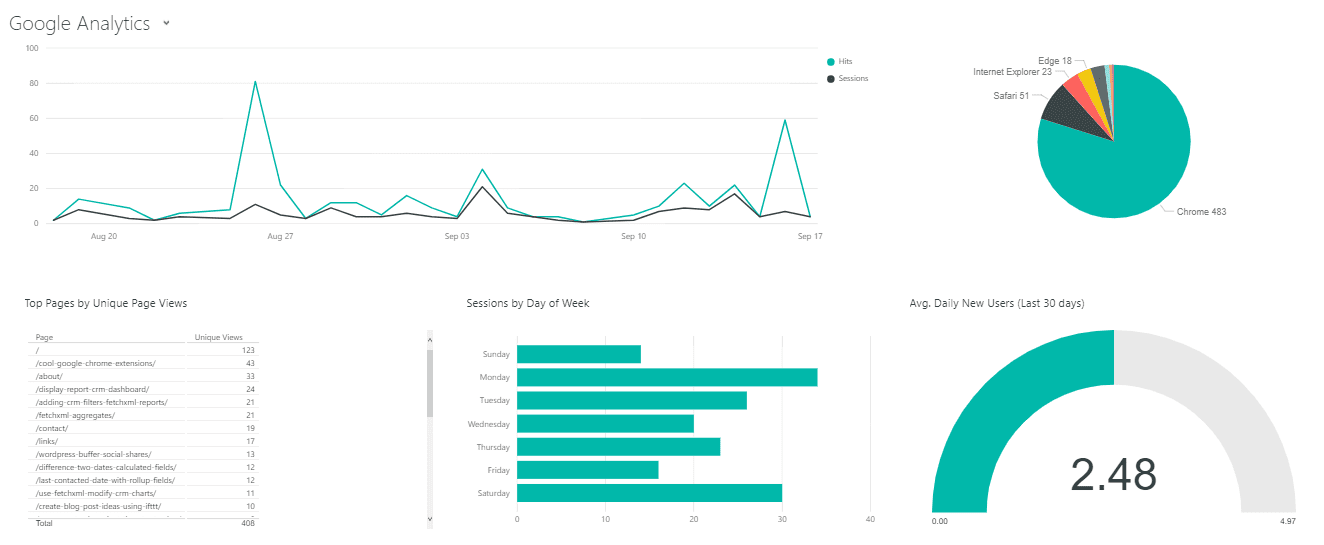
10. Autodialer and calling software
Autodialing tools cover a great deal of calling agents’ workload. Using a cloud phone system, automating dialing, and answering calls with recorded messages helps take care of outbound and inbound calls, as well as get timely notifications of missed calls.
Integrating CloudTalk or Squaretalk in your CRM gives you simple call logging, tag assigning, and request filling in. The data is then automatically assigned to the prospect or client so that other agents can access it. Also, you can set up outbound campaigns based on your leads’ statuses on the customer journey.
11. Accounting tools
One of the ways to simplify your accounting process is by using an invoice generator — this saves your finance team a great deal of time on creating and filling in invoices. Keeping a record of your revenue streams and all the financial activity is another area that can be extremely tedious. Altogether, automating your accounting helps speed it up and minimize the chance of error.
Then, integrating accounting software like Quickbooks or Xero into your CRM system ensures that you are on point with your billing. The financial information automatically syncs with the CRM, regardless of whether it’s incoming or outbound payments. This enables simple checking, report building, and detailed financial analytics.
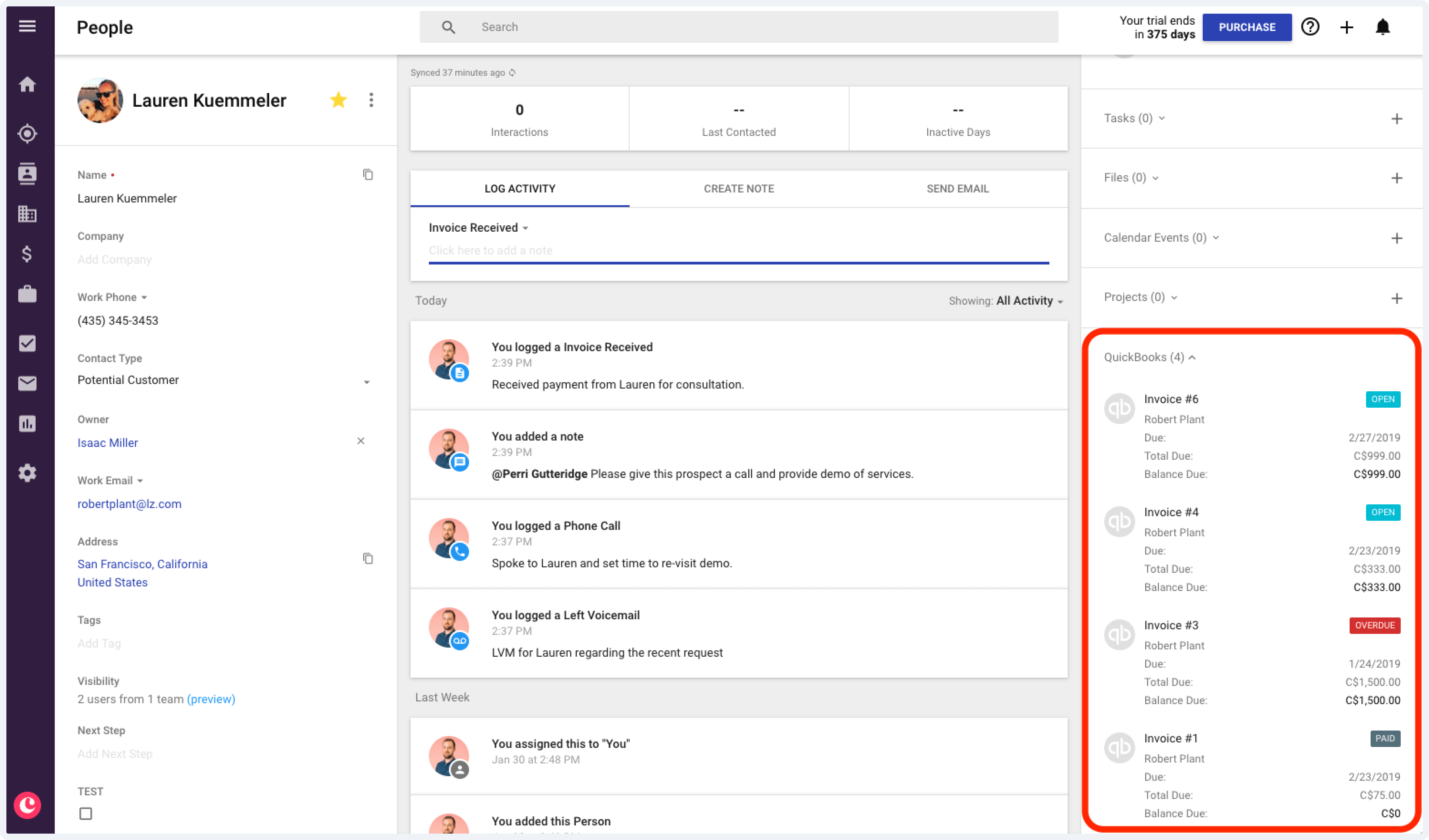
12. CMS integration
A content management system (CMS) stores your website’s pages and content. It’s an environment where you can access different parts of your website and manage them. While it’s a complex system rather than an application, integrating it with your CRM is possible and extremely convenient.
CRM with CMS integration allows you to build your website, host it, do your marketing and accounting, use your customer data, and create analytics in a single system. So you get an extensive range of capabilities for data exchange in one application.
13. Help desk
Choosing a suitable help desk software is a way organize customer support requests that come via various communication channels, like calls or emails. The support tickets are logged in one place where you can see previous conversations with the person, their concerns, and feedback.
The most popular help desk tools are Zendesk, Help Scout, and Zoho Desk. These allow syncing customer support with your contact list to track success, build reports, improve customer data onboarding, set up marketing campaigns based on the tickets, and perform other actions, all in your CRM system.
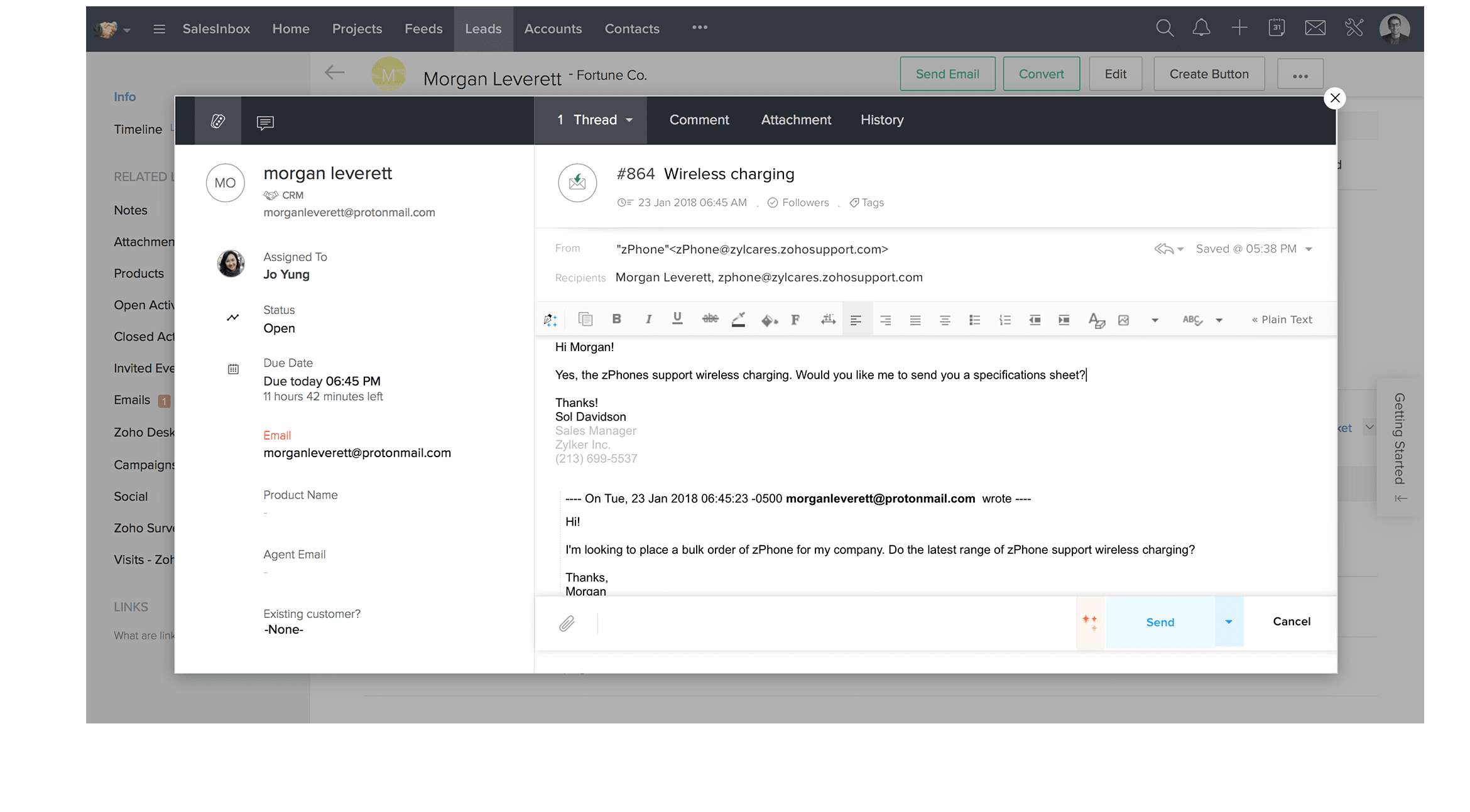
14. Live chat
A live chat widget on your website can really help convert your website visitors to leads. The pop-up window offering assistance to the visitors can start the conversation so that you can engage them and turn them into leads. Some of the most popular live chat services are Intercom, LiveChat, and Freshdesk.
By integrating your live chat application into the CRM, you save time on logging the conversations and syncing them with your contact list manually. The data is synced with the lead automatically, along with the entire conversation and their contacts for your further reference.
15. Social media platforms
Facebook, LinkedIn, Twitter, Instagram, and YouTube marketing play a huge role in your sales opportunities. Staying consistent with your social media marketing and tracking the success of your publications define the growth of your business.
The integrations help plan your content, automate publications to keep up with the posting schedule, and build reports easily. Having all your social media integrated also allows seeing a full picture of audience engagement.
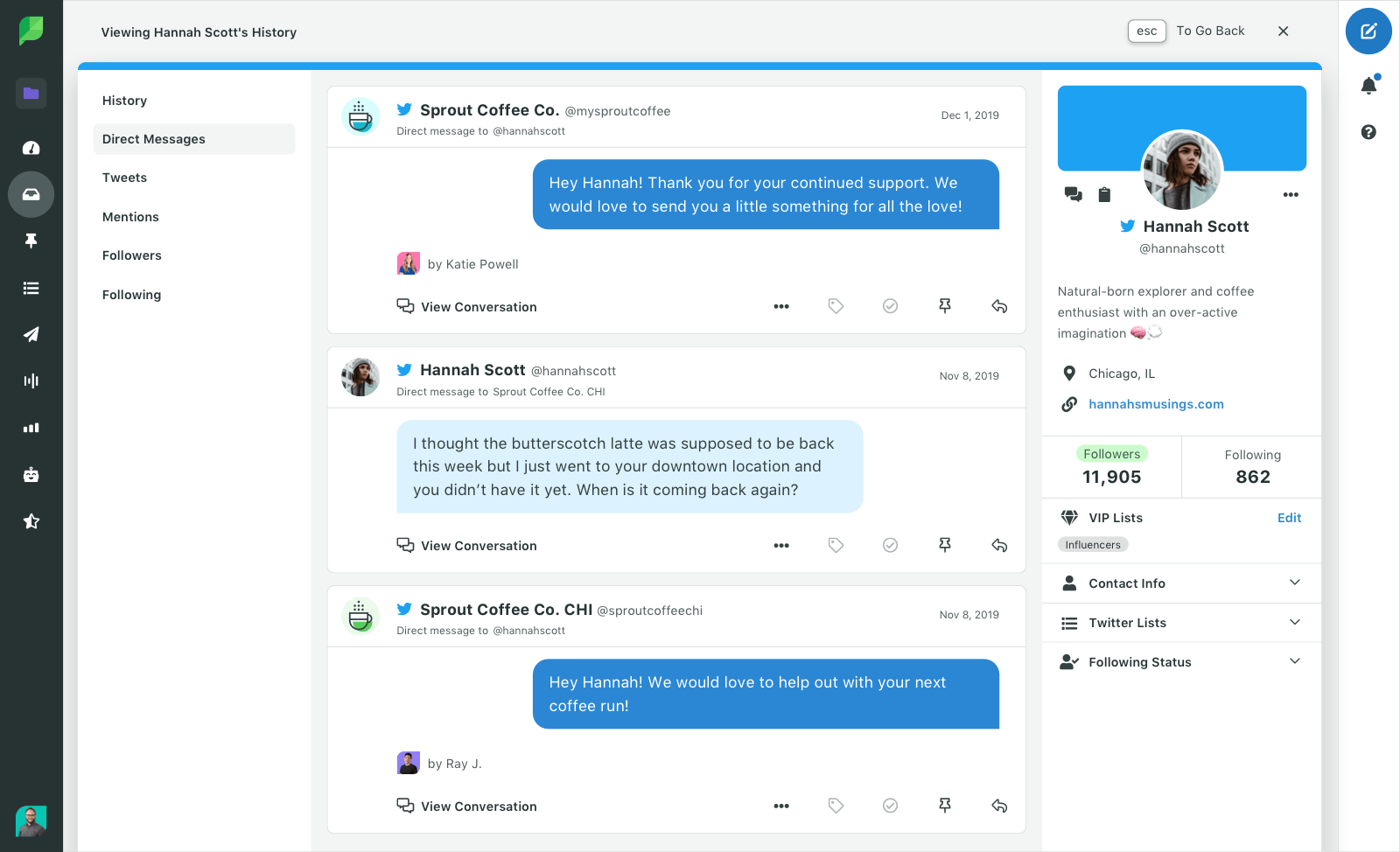
16. E-commerce store integration
E-commerce platforms like Shopify already unite a lot of processes in one place — you get your product list, orders, payments, and other things in your admin account. While these are enough to keep track of the orders, you need more information to get an overview of your store’s success.
Integrating your e-commerce store in the CRM gives you opportunities for better analytics, a deeper insight into your customers’ preferences, and order and payment synchronization. Besides, you can use it with other integrations to tackle various processes, like accounting or marketing.
17. Contract, document, and proposal software
Setting up contracts, documents, and proposals for your customers is simple with CLM software like DocuSign, SAP Ariba, Conga, and PandaDoc and document management software like M-Files. You can access many templates to create documents quickly and don’t have to insert the data manually, pulling it from a different application.
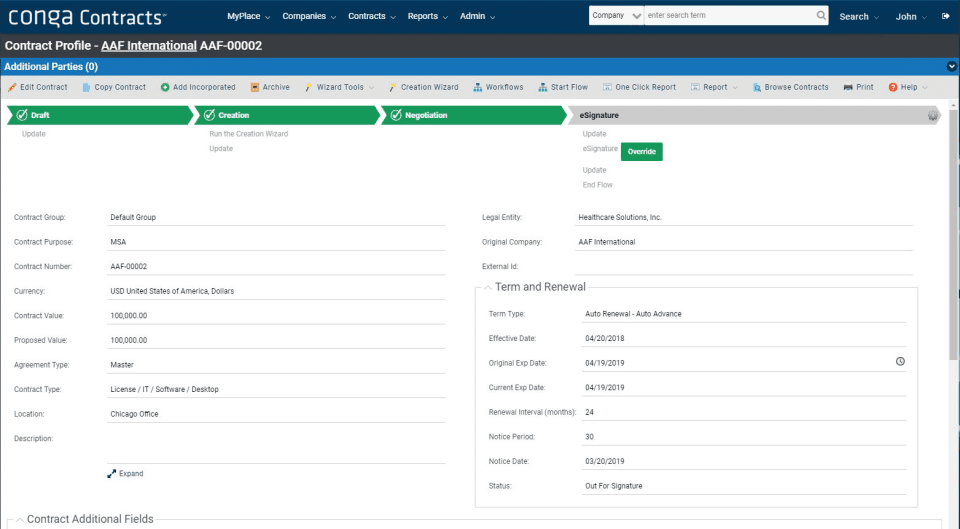
These integrations pull the customer data you need directly from the system to fill in the proposal or contract. Besides, the documents are assigned to your contacts automatically so that your data is synced at all times.
18. Spreadsheets integration
Spreadsheets are a great tool for your data storage and management. You can use applications like Google Sheets and Microsoft Excel to create contact lists, view your orders, store accounting data, and make reports.
Integrating your spreadsheets with the CRM allows you to work with the data directly in the system. Along with other integrations, like those for analytics or accounting, spreadsheets work to back up your data, prevent duplicates, and build reports, automatically accessing the entires needed and logging the information to the target file.
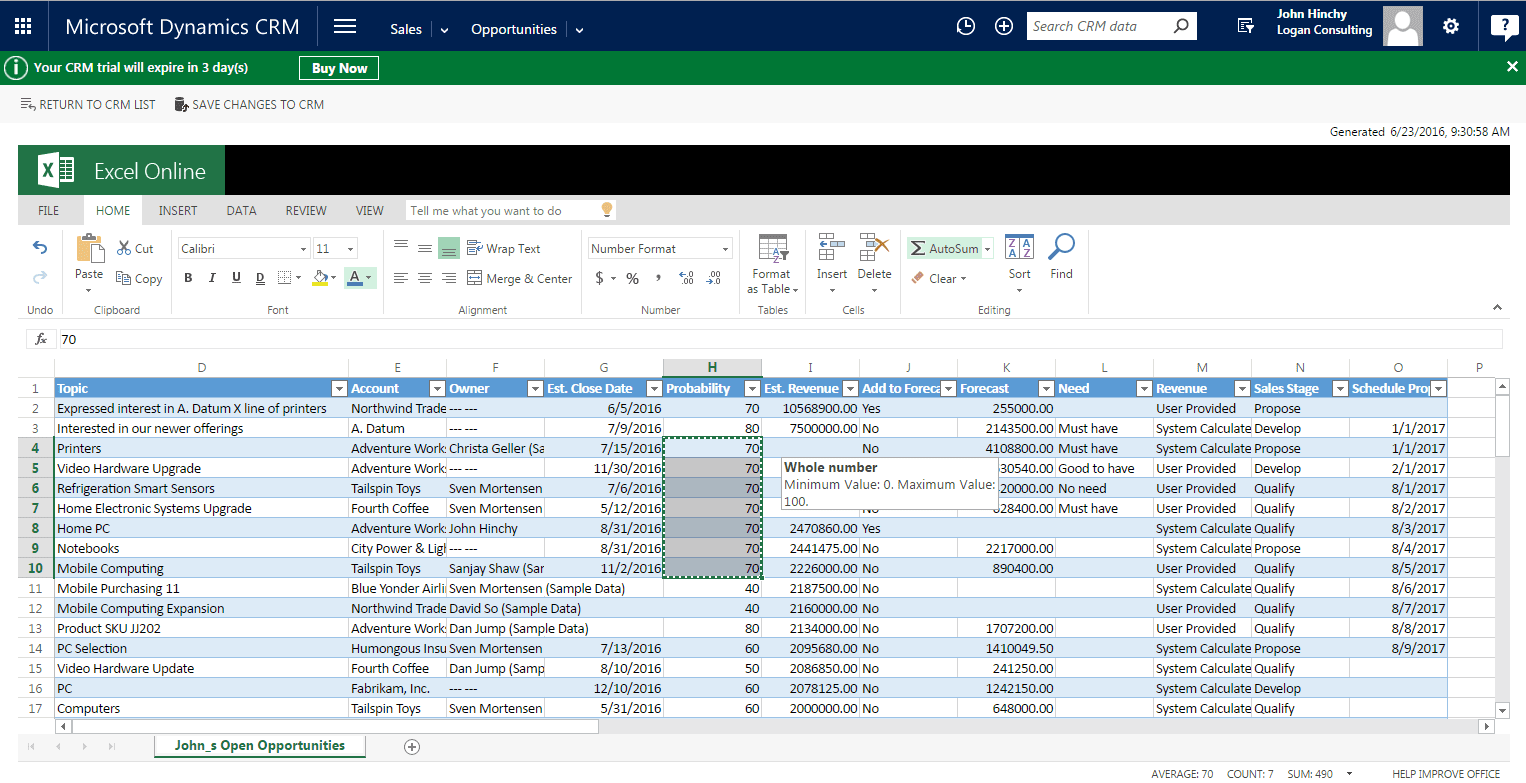
How to Set Up Your CRM Integrations
There are different ways to integrate apps with a CRM system, like the following:
- Choosing third-party data integration tools and setting up connectors. Usually, it doesn’t require coding skills. Such services have established integrations with dozens yet hundreds of popular apps, so you can just set up a connection in a few clicks. This option is the most widely used, and most simple, option.
- Using APIs is the most effective choice, both for small tasks and in the long run. APIs allow integrating apps with flexibility, and you can add or remove integrations according to your changing business needs.
- Building code to establish communication between apps. This can be tricky and messy since it demands constant code changes, especially when the software updates.
- Purchasing software from a single vendor so that all apps can connect automatically. However, one provider may simply not offer everything you need to cover all your business processes.
Best CRM Integration Tools in 2022
Here are the five best tools to connect and power your organization’s CRM integrations.
1. Mulesoft by Salesforce
- G2 Review Rating: 4.5 out of 5
- Pricing (annually):
- Gold — starts at $80,000
- Platinum — calculated individually
- Titanium — starts at $250,000
Mulesoft allows connecting applications, devices, and data in the cloud or on-premises. The solution operates via APIs and provides API management tools. Mulesoft helps unite your services and channels into a single system on the basis of your CRM. The tool helps complete a digital transformation for your business.
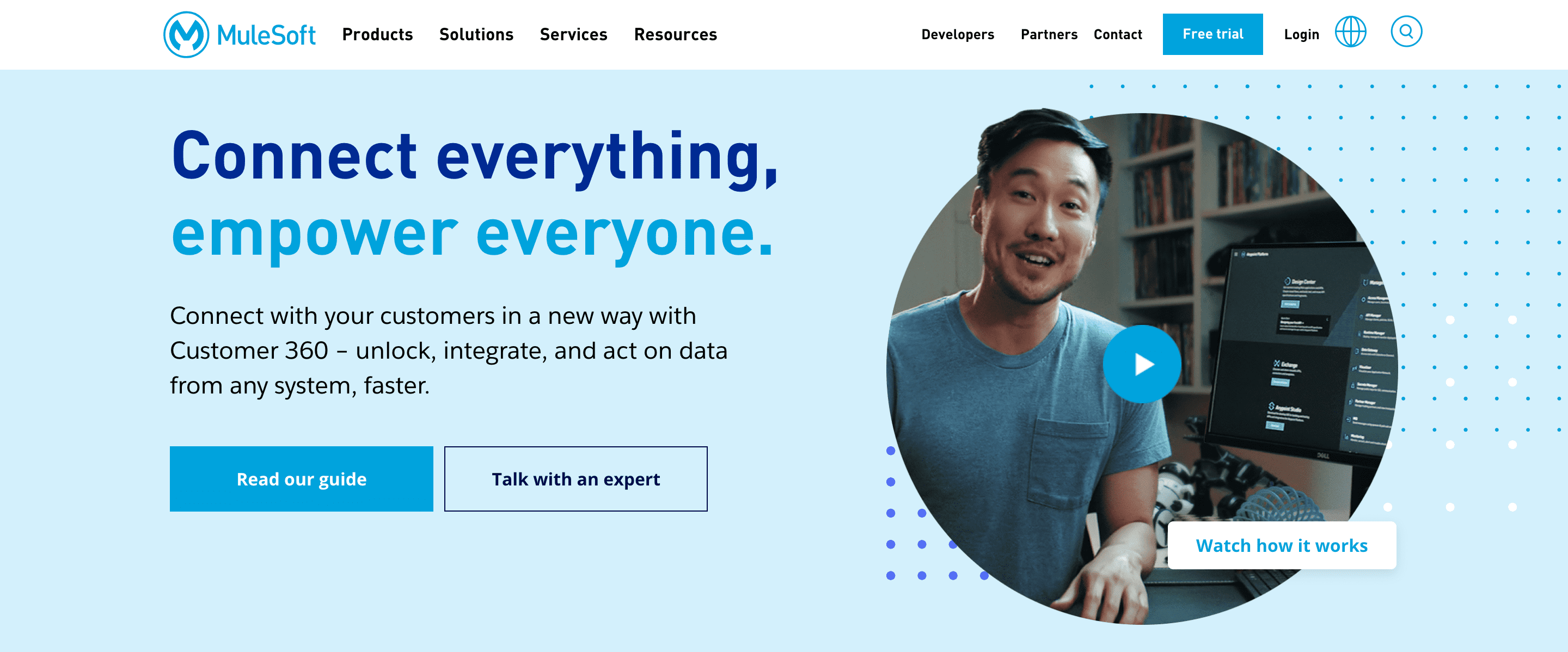
2. Jitterbit
- G2 Review Rating: 4.6 out of 5
- Pricing (annually):
- Standard — $1,000
- Professional — $2,500
- Enterprise — $5,000
Jitterbit allows using API to integrate applications into your CRM system. You can connect to the cloud or on-premises applications, as well as SaaS, to enhance your business processes. Jitterbit uses artificial intelligence for all processes to provide next-level opportunities. The platform is useful for all teams and tasks, from sales to customer support.
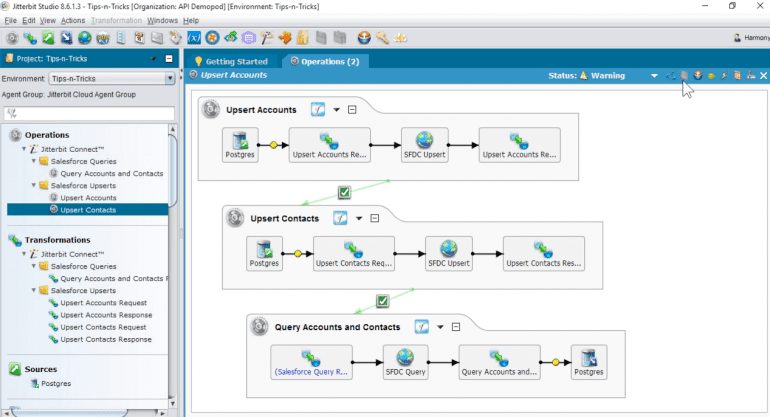
3. Dell Boomi
- G2 Review Rating: 4.3 out of 5
- Pricing (annually):
- Standard — starts at $550
- Pro Plus Additional — $2,000
- Enterprise Advanced — $4,000
- Enterprise Plus Advanced — $8,000
Boomi from Dell is a cloud-based solution for app integration and connectivity. The integration platform provides workflow automation capabilities and a master data hub. You also get API management tools and can develop low-code apps to meet your integration needs. Boomi can handle complex data operations, including document combination and data encryption/decryption.
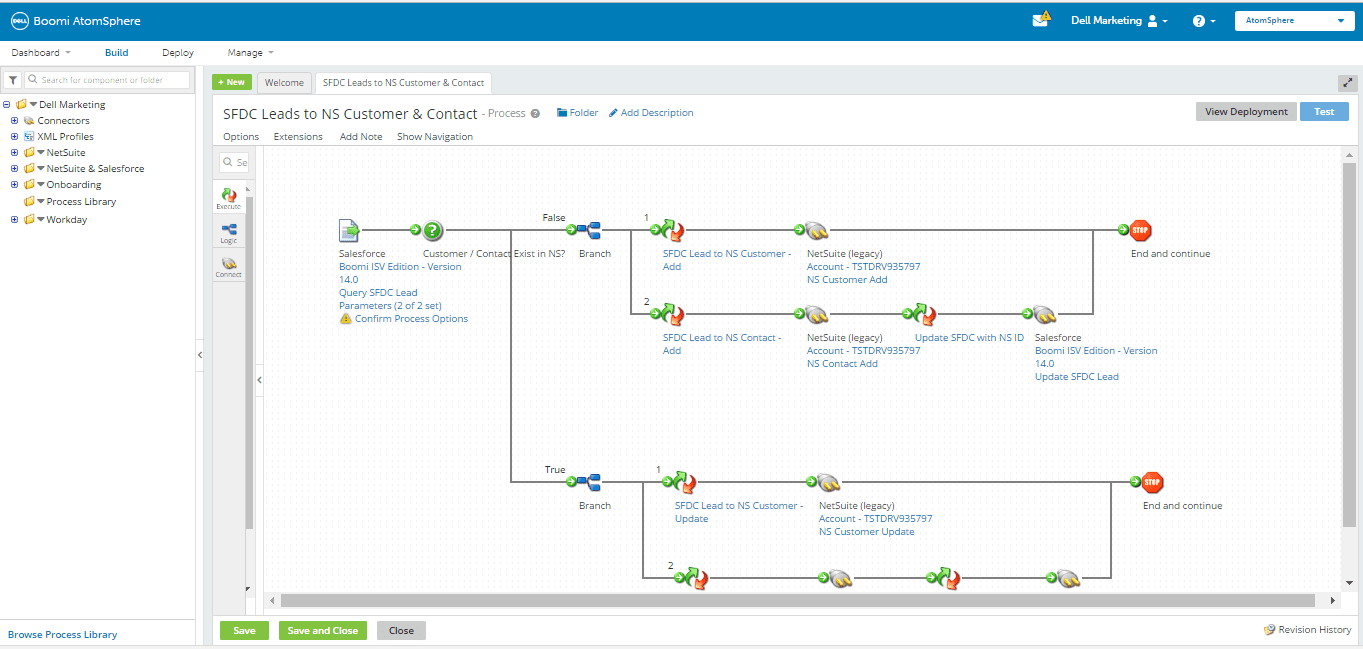
4. Zapier
- G2 Review Rating: 4.5 out of 5
- Pricing (annually):
- Free — $0
- Starter — $19.99
- Professional — $49
- Team — $299
- Company — $599
Zapier allows automating any business process with web app integration and no code writing. You can set up triggers to push data between applications automatically. With Zapier, you can automate your daily tedious tasks and have them done faster. From team notification to lead tracking, Zapier will manage any job.
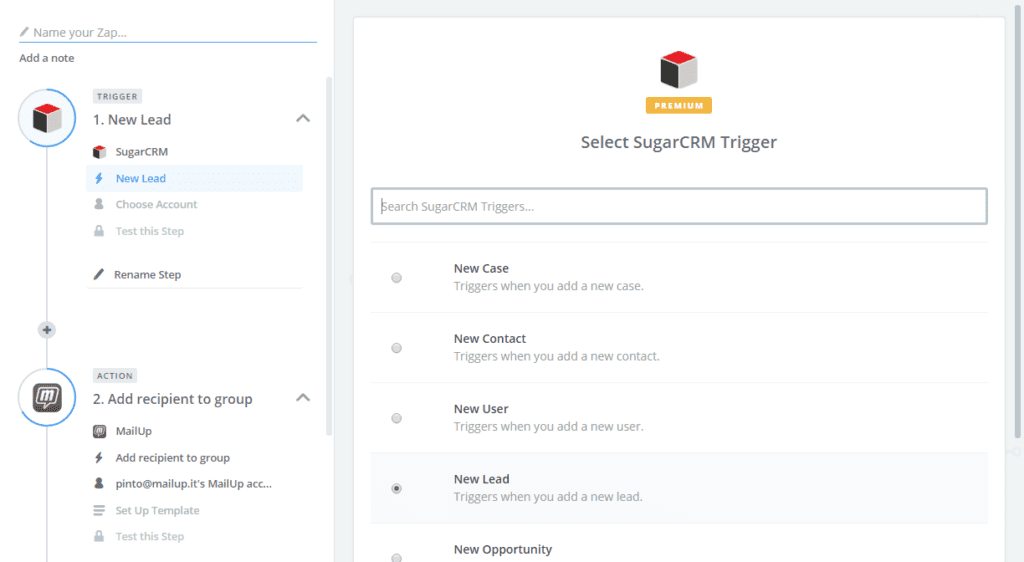
5. Coupler.io
- G2 Review Rating: 5 out of 5
- Pricing (annually):
- Free – $0
- Professional — $24
- Squad — $49
- Business – $99
Coupler.io is a data integration solution to synchronize data automatically. In terms of CRMs, Coupler.io has established integrations with popular platforms like HubSpot, Salesforce, and Pipedrive. You can connect any CRM of your choice via JSON API connection. Using Coupler.io, you can back up your CRM data, export it to spreadsheets on schedule, improve reporting and analytics.
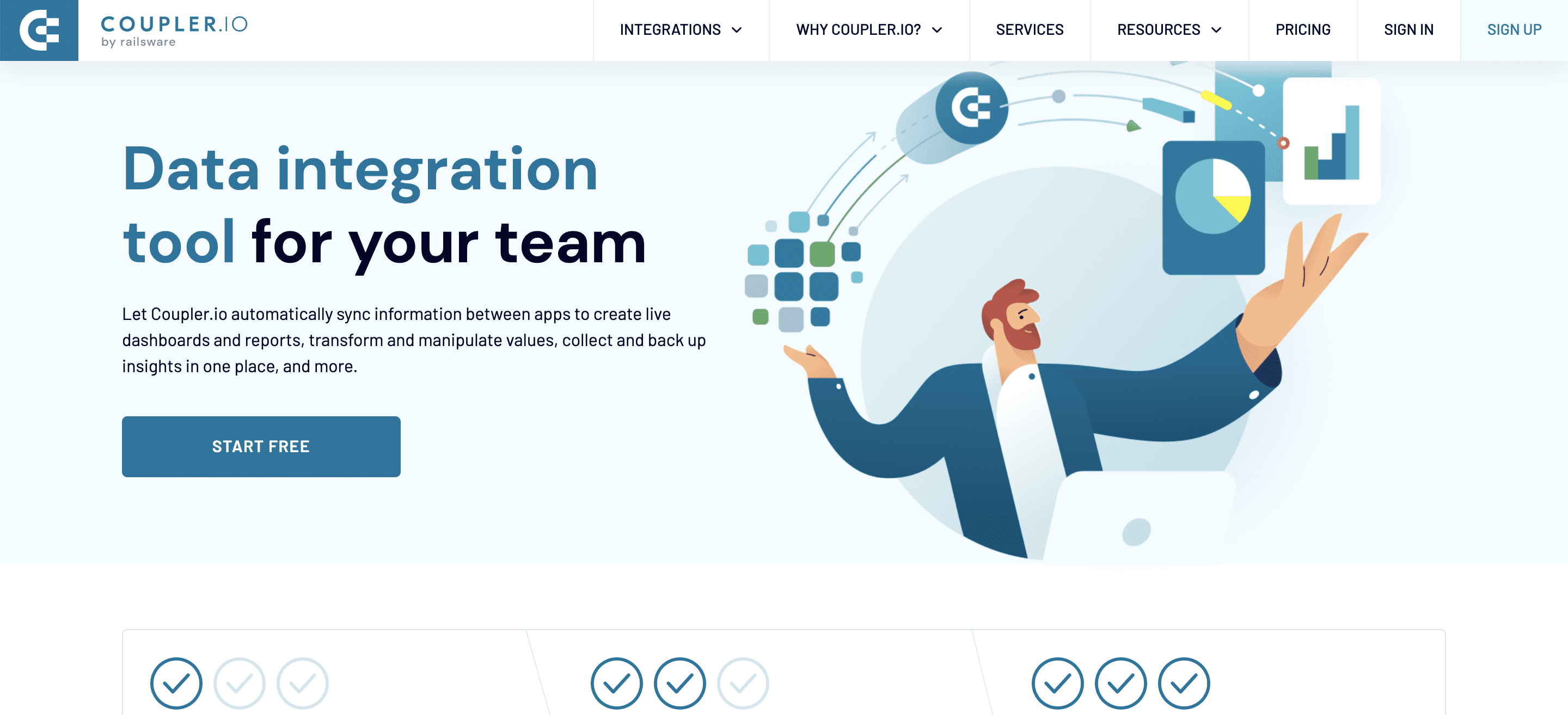
CRM clicks with Whatfix
Drive adoption of your CRM & sales processes with Whatfix’s integrated, in-app employee training and performance support
Your CRM and sales stack empowers your team to automate processes, be more productive, and sell more. However, without a strategy to drive employee adoption of these tools, sales teams will revert to less productive, manual processes – leading to poor software ROI and an overall unproductive sales team.
With Whatfix, sales leaders can empower their sales team members with contextual in-app guidance integrated directly into their CRM, CLM, CPQ, and other sales technologies – including:
- Interactive walkthroughs
- Step-by-step guidance
- Onboarding task lists
- Smart tips
- New feature announcements
- Compliance alerts
- Embedded knowledge bases
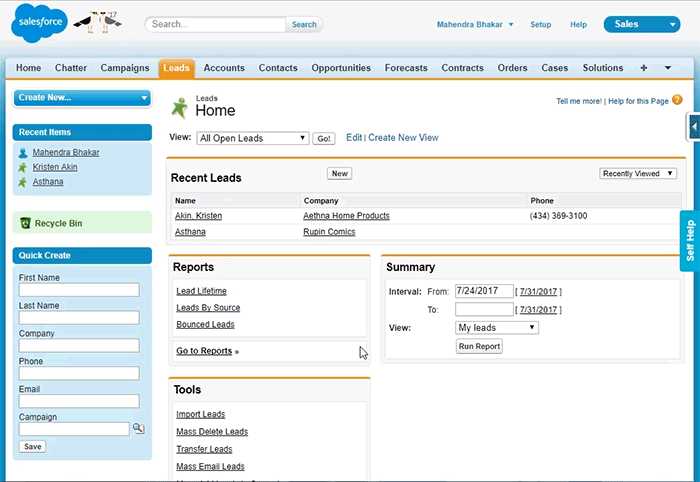
Whatfix integrates with your Google Drive, intranet portal, LMS, sales documentation, and third-party forums and websites to provide on-demand, 24/7 performance support – all in the moment of need, without having to leave your digital applications. Whatfix empowers your sales teams members – from new sales reps at onboarding to experienced AEs that need more contextual process documentation – to utilize your sales tech stack to its fullest potential and maximize their selling.
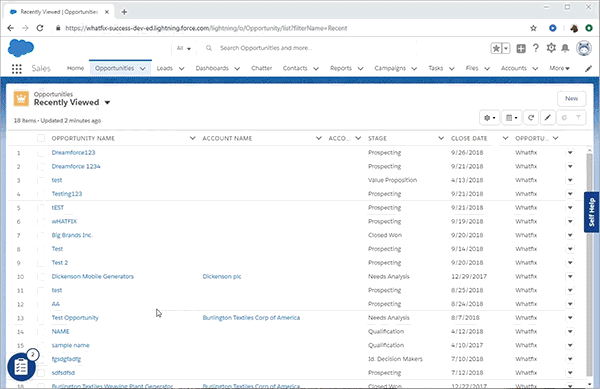
To learn more about how to leverage in-app guidance technology like Whatfix, read our in-depth guide to digital adoption platforms now!












